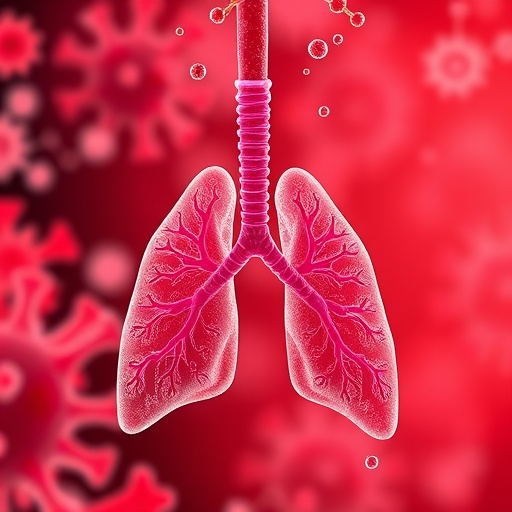Idaho’s Medical Freedom Act disarms public health – Healthbeat

Report on the Idaho Medical Freedom Act and its Implications for Sustainable Development Goals
Introduction
A new law in Idaho, the Medical Freedom Act, has been enacted with the stated purpose of affirming an individual’s right to bodily autonomy. However, its broad legal language presents a significant challenge to established public health infrastructure and practices. This report analyzes the Act’s provisions and their direct conflict with the achievement of several United Nations Sustainable Development Goals (SDGs), most notably SDG 3 (Good Health and Well-being), as well as SDG 8 (Decent Work and Economic Growth), SDG 11 (Sustainable Cities and Communities), and SDG 16 (Peace, Justice, and Strong Institutions).
Direct Challenges to SDG 3: Good Health and Well-being
The Idaho Medical Freedom Act directly impedes progress on SDG 3, which aims to ensure healthy lives and promote well-being for all. The law’s core provisions undermine the state’s capacity to prevent and control infectious diseases, a key component of this goal.
Undermining Target 3.3: End the Epidemics of Communicable Diseases
The Act systematically dismantles foundational public health measures necessary for controlling the spread of communicable diseases. Key provisions that threaten Target 3.3 include:
- A prohibition on any government or private entity requiring a “medical intervention,” which is broadly defined to include procedures, drugs, devices, or actions used for diagnosis, prevention, or treatment.
- A specific ban on excluding any “healthy” individual from a location during a disease outbreak based on their vaccination status, a direct contradiction of standard outbreak management protocols.
- The removal of authority from state and local health departments to enforce measures such as vaccination, testing, and other preventive practices essential for disease control.
Specific Public Health Risks Jeopardizing SDG 3
The legislation creates specific, foreseeable risks to public health that directly threaten the well-being of Idaho’s citizens. These risks include:
- Tuberculosis Control: The Act could be used to contest isolation and treatment orders for active tuberculosis cases. It may also prevent healthcare facilities from requiring N95 masks for providers or isolating infectious patients, increasing the risk of institutional outbreaks.
- Healthcare Infection Control: Hospitals and clinics may face legal challenges for requiring staff to receive influenza vaccinations or use standard personal protective equipment (PPE), compromising patient and provider safety in alignment with SDG 3.
- Outbreak Management: The law strips health departments of the authority to exclude unvaccinated or exposed individuals during outbreaks of diseases like measles and meningococcal disease, allowing for the unchecked spread of highly contagious infections within the community.
Implications for SDG 8 (Decent Work) and SDG 11 (Sustainable Communities)
The Act’s impact extends beyond direct health outcomes, affecting the safety of workers and the resilience of communities.
Compromising Target 8.8: Promote Safe and Secure Working Environments
The law creates significant occupational safety hazards, undermining the principles of SDG 8. By limiting the ability of employers to implement health and safety protocols, the Act jeopardizes the well-being of the workforce, particularly in high-risk sectors.
- Laboratories and emergency services may be unable to require hepatitis B vaccinations for employees.
- Requirements for essential PPE, such as gloves or N95 respirators, could be challenged unless explicitly mandated by federal law.
- The Act creates direct conflicts with federal Occupational Health and Safety Administration (OSHA) standards, leaving employers in a state of legal uncertainty regarding their duty to protect workers.
Weakening Target 11.5: Reduce the Impact of Disasters
Infectious disease outbreaks are a significant threat to community stability and resilience. By disabling the tools for outbreak control, the Act weakens the ability of communities to prepare for and respond to public health crises, a key aspect of SDG 11. The inability to manage outbreaks effectively makes cities and communities less safe and sustainable.
Erosion of SDG 16: Peace, Justice and Strong Institutions
The Idaho Medical Freedom Act represents a significant challenge to the integrity and effectiveness of public institutions, a core focus of SDG 16.
Dismantling Effective Public Health Institutions (Target 16.6)
The U.S. Constitution grants states primary responsibility for public health through their “police powers.” The Act effectively sees the state of Idaho stripping itself of this authority, weakening the very institutions designed to protect its citizens. By removing the power of health departments to implement standard infection control practices, the law dismantles the institutional capacity for public health governance.
Creating Legal and Jurisdictional Conflict
The legislation fosters legal uncertainty and conflict, undermining the rule of law and the function of accountable institutions.
- The Act creates potential conflicts between state law and federal regulations from agencies such as OSHA, the Centers for Medicaid and Medicare Services (CMS), and the Centers for Disease Control and Prevention (CDC).
- Prohibiting the isolation or exclusion of contagious individuals may violate the rights of others to health and safety.
- Hospitals, schools, and employers are left in a precarious legal position, forced to navigate conflicting state and federal requirements, which could lead to either outbreaks or litigation.
Analysis of the Article in Relation to Sustainable Development Goals
1. Which SDGs are addressed or connected to the issues highlighted in the article?
The article on the Idaho Medical Freedom Act primarily addresses issues related to three Sustainable Development Goals (SDGs):
- SDG 3: Good Health and Well-being: The core of the article discusses the new law’s impact on public health infrastructure and its ability to prevent and control infectious diseases, which is central to ensuring healthy lives and promoting well-being.
- SDG 16: Peace, Justice and Strong Institutions: The article details how the Idaho law weakens public health institutions by stripping them of their legal authority (“police powers”) to enforce disease control measures. It also highlights the legal conflicts and uncertainty created between state and federal laws, touching upon the effectiveness and accountability of governmental institutions.
- SDG 8: Decent Work and Economic Growth: The article explicitly mentions the law’s consequences for occupational safety, particularly for healthcare workers, laboratory staff, and emergency services personnel, by limiting the ability of employers to mandate protective measures like vaccines and personal protective equipment (PPE).
2. What specific targets under those SDGs can be identified based on the article’s content?
Based on the issues discussed, several specific SDG targets are relevant:
-
SDG 3: Good Health and Well-being
- Target 3.3: “By 2030, end the epidemics of AIDS, tuberculosis, malaria and neglected tropical diseases and combat hepatitis, water-borne diseases and other communicable diseases.” The article directly relates to this target by explaining how the law could undermine efforts to control tuberculosis, measles, meningococcal disease, and hepatitis B, potentially leading to outbreaks.
- Target 3.d: “Strengthen the capacity of all countries… for early warning, risk reduction and management of national and global health risks.” The article argues that the Idaho law does the opposite by “dismantling standard infectious disease control practices” and weakening the state’s capacity to manage disease outbreaks.
-
SDG 16: Peace, Justice and Strong Institutions
- Target 16.6: “Develop effective, accountable and transparent institutions at all levels.” The article describes how the law strips state and local health departments of their authority, making these institutions less effective in their primary function of protecting public health. It states Idaho is “choosing to disarm its police powers for health.”
-
SDG 8: Decent Work and Economic Growth
- Target 8.8: “Protect labour rights and promote safe and secure working environments for all workers…” The article highlights that the law creates risks for workers by stating that “laboratories and emergency services may be unable to require hepatitis B vaccination, gloves, or N95 masks.” This directly conflicts with the goal of ensuring a safe working environment, especially in high-risk professions like healthcare.
3. Are there any indicators mentioned or implied in the article that can be used to measure progress towards the identified targets?
The article does not mention official SDG indicators, but it implies several metrics that could be used to measure the law’s impact, effectively serving as indicators of regression from the targets:
-
For SDG 3 (Good Health and Well-being)
- Incidence of communicable diseases: The article warns of potential “TB outbreaks in health care facilities” and the spread of measles and meningococcal disease. An increase in the incidence rates of these diseases would be a direct indicator of failure to meet Target 3.3.
- Vaccination coverage rates: By prohibiting entities from requiring vaccination, the law is likely to affect vaccination rates. A decline in coverage for diseases like measles, flu, and hepatitis B would be an implied indicator related to the capacity to manage health risks (Target 3.d).
- State capacity for outbreak response: A qualitative indicator for Target 3.d is the legal and practical ability of health departments to implement standard control measures. The article states the law forbids “excluding any ‘healthy’ person during a disease outbreak because of vaccination status,” indicating a diminished capacity.
-
For SDG 16 (Peace, Justice and Strong Institutions)
- Legal authority of public health institutions: An indicator for Target 16.6 is the scope of legal power held by health departments. The article explicitly states the law “removes public health authority at the state and local level to enforce measures,” which can be measured through legal analysis of the statute.
-
For SDG 8 (Decent Work and Economic Growth)
- Rates of occupational infections: An indicator for Target 8.8 would be the number of healthcare and emergency workers who contract infectious diseases like hepatitis B or tuberculosis on the job. The article implies this rate may increase due to the inability of employers to mandate protective measures.
- Enforcement of occupational safety standards: The article points to “conflicts with federal occupational health standards” and uncertainty for employers. The number of workplaces unable to enforce standards for PPE (like N95 masks) or required vaccinations would be a relevant indicator.
4. Table of SDGs, Targets, and Indicators
| SDGs | Targets | Indicators (Implied from the Article) |
|---|---|---|
| SDG 3: Good Health and Well-being | 3.3: End epidemics of communicable diseases.
3.d: Strengthen capacity for management of national health risks. |
|
| SDG 16: Peace, Justice and Strong Institutions | 16.6: Develop effective, accountable and transparent institutions. |
|
| SDG 8: Decent Work and Economic Growth | 8.8: Protect labour rights and promote safe and secure working environments. |
|
Source: healthbeat.org
What is Your Reaction?
 Like
0
Like
0
 Dislike
0
Dislike
0
 Love
0
Love
0
 Funny
0
Funny
0
 Angry
0
Angry
0
 Sad
0
Sad
0
 Wow
0
Wow
0




















































.jpg.webp?itok=0ZsAnae9#)



























